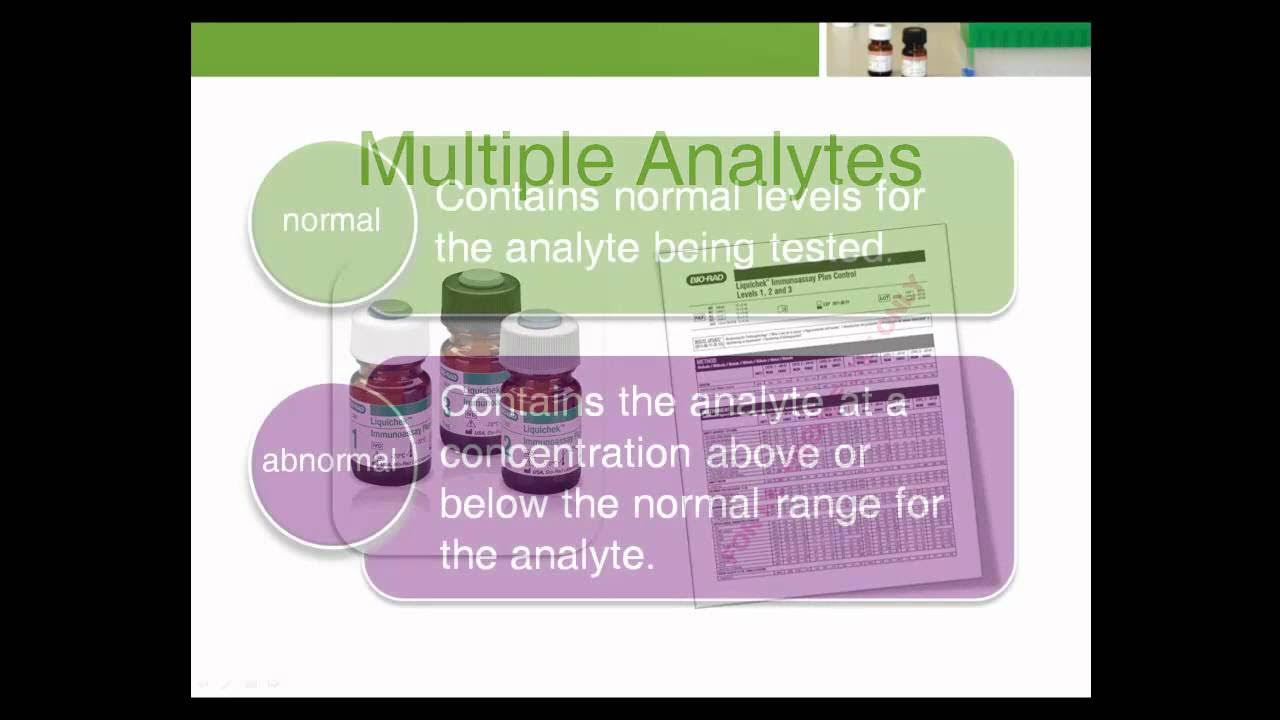Chapter 2 Calculations and Statistics
Summary
TLDRChapter 2 of the laboratory calculations module focuses on essential QC statistics derived from control product testing. It explains how to calculate the mean and standard deviation for different control levels, emphasizing their significance in assessing test consistency and reliability. The script also addresses the importance of precision in regular patient tests, such as glucose monitoring for diabetics, and offers troubleshooting steps for detecting and resolving analytical process malfunctions.
Takeaways
- 🧪 **Laboratory Calculations**: The chapter introduces basic calculations used in laboratory settings, emphasizing the importance of QC statistics.
- 📊 **QC Database**: QC statistics are derived from a QC database, which is populated by regular testing of control products at different control levels.
- 🔢 **Mean Calculation**: The mean, or average, is calculated by summing all values for a specific control level and dividing by the number of values, representing the analyte's true value estimate.
- 📉 **Standard Deviation**: Standard deviation measures the closeness of QC values to each other, often used interchangeably with the term 'precision'.
- 📈 **Consistency and Repeatability**: Low standard deviation indicates consistent test repeatability, while high standard deviation suggests inconsistency, potentially due to malfunctions.
- 🩺 **Clinical Relevance**: Precision is crucial for regularly repeated tests, such as glucose levels in diabetic patients, to ensure reliable tracking of treatment or disease progression.
- 🛠️ **Troubleshooting**: If standard deviation increases significantly, it may indicate a need to investigate potential issues with reagents, maintenance, equipment, or operator changes.
- 🔍 **Investigation Questions**: The script suggests specific questions to ask when investigating a potential loss of precision, such as changes in reagents or maintenance routines.
- 📚 **Educational Value**: Understanding the mathematical principles behind standard deviation, even when using automated tools, is emphasized for a deeper comprehension of laboratory QC.
- 🏥 **Resource Recommendation**: The script concludes by directing users to www.qcnet.com for all their laboratory QC needs.
Q & A
What is the purpose of calculating QC statistics in a laboratory?
-The purpose of calculating QC statistics in a laboratory is to determine the quality and reliability of test results by analyzing data collected from regular testing of control products.
How does the data collected for each level of control affect the calculated statistics?
-The data collected for each level of control is specific, and therefore, the statistics and ranges calculated from this data are also specific for each level of control, reflecting the behavior of the test at specific concentrations.
What is the mean in the context of laboratory QC?
-The mean, or average, is the laboratory's best estimate of the analyte's true value for a specific level of control, calculated by adding all the values collected for that control and dividing by the total number of values.
Can you provide an example of how to calculate the mean for a specific level of control?
-Yes, for instance, to calculate the mean for the normal control (Level I) with data {4.0, 4.1, 4.0, 4.2, 4.1, 4.1, 4.2}, the sum is 28.7 mmol/L. With 7 values, the mean is 4.1 mmol/L.
What is standard deviation and why is it important in laboratory QC?
-Standard deviation is a statistic that quantifies how close numerical values (QC values) are in relation to each other, indicating the precision or consistency of a test. It's important for assessing the reliability and consistency of test results.
How is standard deviation related to the term 'precision'?
-Precision is often used interchangeably with standard deviation in the context of laboratory QC, as both terms describe the closeness of numerical values to each other.
What does a high standard deviation indicate about a test's repeatability?
-A high standard deviation indicates inconsistent repeatability of a test, which may be due to the chemistry involved or a malfunction that needs to be corrected.
Why is good precision particularly important for tests that are repeated regularly on the same patient?
-Good precision is important for tests that are repeated regularly on the same patient to track treatment or disease progress accurately, ensuring reliable and consistent results over time.
What steps should be taken if there is a significant increase in standard deviation for a test?
-If there is a significant increase in standard deviation, it indicates a loss of precision, and the laboratory should investigate potential causes such as changes in reagents, maintenance issues, electrode conditions, pipette operation, or changes in test operators.
How is standard deviation calculated from a set of QC values?
-Standard deviation is calculated by determining the mean of the QC values, summing the squares of the differences between each individual QC value and the mean, and then dividing by the number of values minus one. The result is the square root of this quotient.
What is the significance of the formula used for calculating standard deviation?
-The formula for calculating standard deviation is significant because it provides a mathematical basis for understanding the variability of a set of data, which is crucial for assessing the quality and consistency of laboratory tests.
Outlines

This section is available to paid users only. Please upgrade to access this part.
Upgrade NowMindmap

This section is available to paid users only. Please upgrade to access this part.
Upgrade NowKeywords

This section is available to paid users only. Please upgrade to access this part.
Upgrade NowHighlights

This section is available to paid users only. Please upgrade to access this part.
Upgrade NowTranscripts

This section is available to paid users only. Please upgrade to access this part.
Upgrade NowBrowse More Related Video

QA vs. QC: Understanding the Key Difference

Chapter 1 Quality Control Basics

Quality Management System, Quality Assurance, and Quality Control in the Laboratory

Chapter 4 Additional Quality Control Statistics

QA vs QC: Are You Making This Common Mistake?

Presentasi Mikrobiologi Farmasi Quality Control (QC) kelompok 2 FA22-2
5.0 / 5 (0 votes)